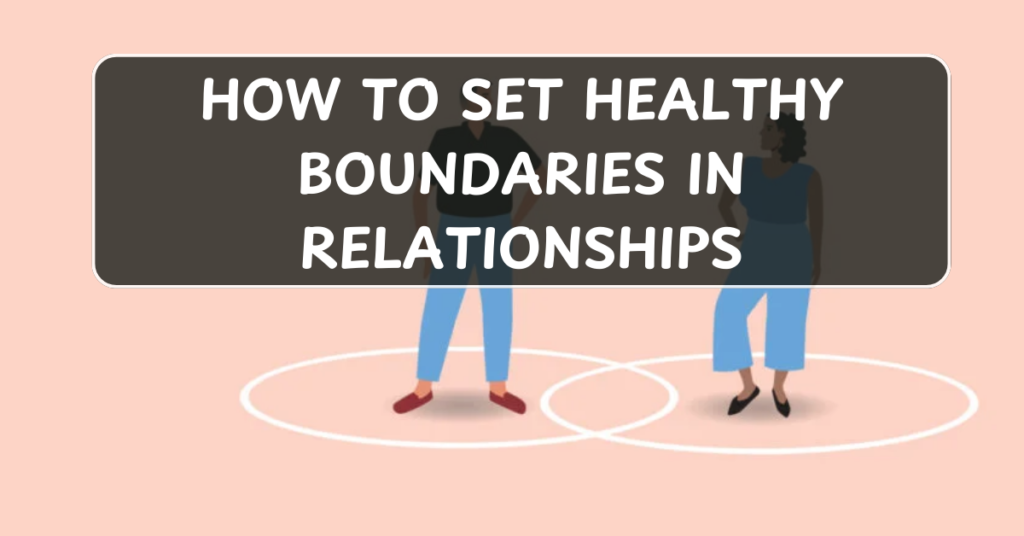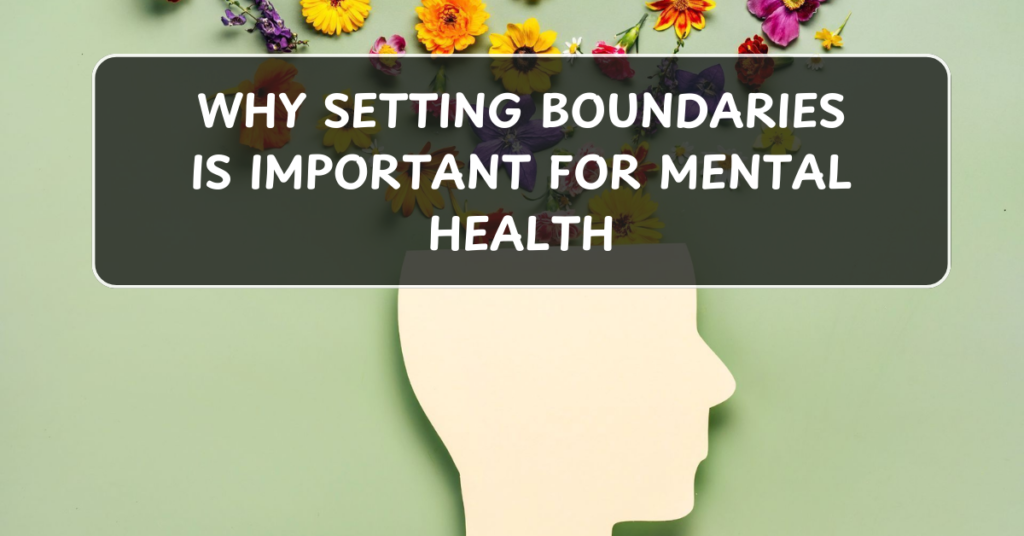
Setting healthy boundaries in relationships is essential for maintaining a sense of personal well-being, mutual respect, and balance. Boundaries help to define where one person ends and another begins, ensuring that each individual’s needs, values, and feelings are respected. Whether it’s a romantic relationship, family connection, or friendship, healthy boundaries allow people to communicate effectively, avoid unnecessary conflict, and create a safe space for growth.
If you’ve ever felt overwhelmed, drained, or taken advantage of in a relationship, you may need to establish clearer boundaries. Here’s how to set healthy boundaries that contribute to stronger, more balanced relationships.
>> Learn To SET Effective Boundaries: Click Here to Learn How <<
1. Understand What Boundaries Are
Before setting boundaries, it’s important to understand what they are. Boundaries are the emotional, physical, and mental limits you set with others to protect your well-being and maintain healthy interactions.
- Physical Boundaries: These refer to personal space, touch, and physical interaction.
- Emotional Boundaries: These relate to your feelings, needs, and the ways you allow others to treat you emotionally.
- Mental Boundaries: These refer to your thoughts, opinions, and the right to make your own decisions without undue influence or manipulation.
- Time Boundaries: These define how much time you are willing to give to others and how you protect your own time.
Once you have an understanding of boundaries, it’s easier to recognize areas in your relationships where boundaries need to be set.
2. Recognize Your Needs and Limits
Setting healthy boundaries starts with recognizing your own needs and limits. Consider what makes you feel comfortable and safe in your relationships and identify what feels overwhelming or harmful.
- Self-Awareness: Take some time to reflect on your values, desires, and personal needs. What do you require to feel loved, respected, and valued?
- Recognize Overstepping: Pay attention to moments when you feel uncomfortable, stressed, or taken advantage of—these can be signals that your boundaries are being crossed.
- Emotional Check-Ins: Regularly check in with yourself emotionally. How do certain situations or interactions make you feel? This can help you understand where boundaries need to be established or strengthened.
3. Communicate Clearly and Assertively
Once you’ve identified your boundaries, the next step is communicating them clearly and assertively. It’s important to express your limits in a way that is direct but respectful to both yourself and others.
- Use “I” Statements: For example, “I need some quiet time after work to recharge” instead of “You never give me enough space.” This helps avoid blaming the other person and keeps the focus on your own feelings and needs.
- Be Direct: Be clear about what you need, and avoid passive language. For instance, saying “I would like to have some time to myself this evening” is more effective than saying “I guess I need some space.”
- Stay Calm and Respectful: Approach the conversation in a calm and non-confrontational manner. It’s important that both parties feel heard and respected.
4. Practice Self-Care
Maintaining healthy boundaries also involves prioritizing self-care. When you take care of yourself, you’re better able to maintain your boundaries and show up in your relationships with a positive attitude.
- Make Time for Yourself: Whether it’s indulging in a hobby, practicing meditation, or simply relaxing, ensure you regularly dedicate time to recharge and reflect on your own needs.
- Nurture Your Emotional Well-being: Engage in activities or practices that make you feel emotionally stable and grounded, such as journaling, therapy, or spending time with supportive people.
- Say No When Necessary: Don’t be afraid to decline requests that will stretch you too thin or compromise your well-being. Saying no is an act of self-care and self-respect.
>> Learn To SET Effective Boundaries: Click Here to Learn How <<
5. Be Consistent
Consistency is key when it comes to enforcing boundaries. It’s easy to slip into old patterns or allow others to push past your boundaries if they aren’t respected right away.
- Reinforce Boundaries: If someone repeatedly crosses a boundary, gently remind them of your needs. For example, “I’ve asked for space in the evenings, and it’s important for me to maintain that time.”
- Stay Firm but Compassionate: It’s natural for people to test boundaries, especially if they are not accustomed to them. Stay firm in your decision, but also show compassion. Let others know you value them, but your boundaries are non-negotiable.
- Don’t Apologize for Your Boundaries: You have a right to your needs and limits, and you should never feel the need to apologize for maintaining them.
6. Recognize and Address Violations
Even when you set clear boundaries, there will be times when others may overstep them. It’s important to recognize when this happens and take action.
- Address Violations Early: Don’t wait until you’re overwhelmed or resentful. Address any boundary violations promptly to prevent frustration from building up.
- Set Consequences: If someone continually disrespects your boundaries, it’s important to establish consequences. For example, “If this continues, I will need to take a break from this relationship.”
- Have a Conversation: Talk openly about why the boundary is important to you and how the violation makes you feel. This can foster understanding and strengthen the relationship moving forward.
7. Be Flexible and Willing to Reassess
Boundaries are not set in stone. As relationships evolve, your boundaries may shift based on your changing needs and circumstances.
- Check-In Regularly: Reevaluate your boundaries from time to time to see if they still align with your current needs.
- Adapt to Changes: Life changes such as moving, new jobs, or relationship transitions may require you to adapt your boundaries. Stay flexible while keeping your core values intact.
8. Seek Support if Needed
If you struggle to set or enforce boundaries, consider seeking support from a therapist, counselor, or trusted friend. Professional guidance can help you build confidence in asserting your boundaries and offer strategies for difficult situations.
Conclusion
Setting healthy boundaries is vital for creating and maintaining balanced, respectful relationships. By recognizing your needs, communicating clearly, practicing self-care, and enforcing your boundaries consistently, you ensure your emotional well-being while fostering stronger connections with others. Remember, healthy boundaries aren’t just about saying “no”—they are about maintaining respect for yourself and others, creating space for mutual growth, and ensuring your relationships are fulfilling and sustainable. Start setting healthy boundaries today, and watch your relationships thrive!


